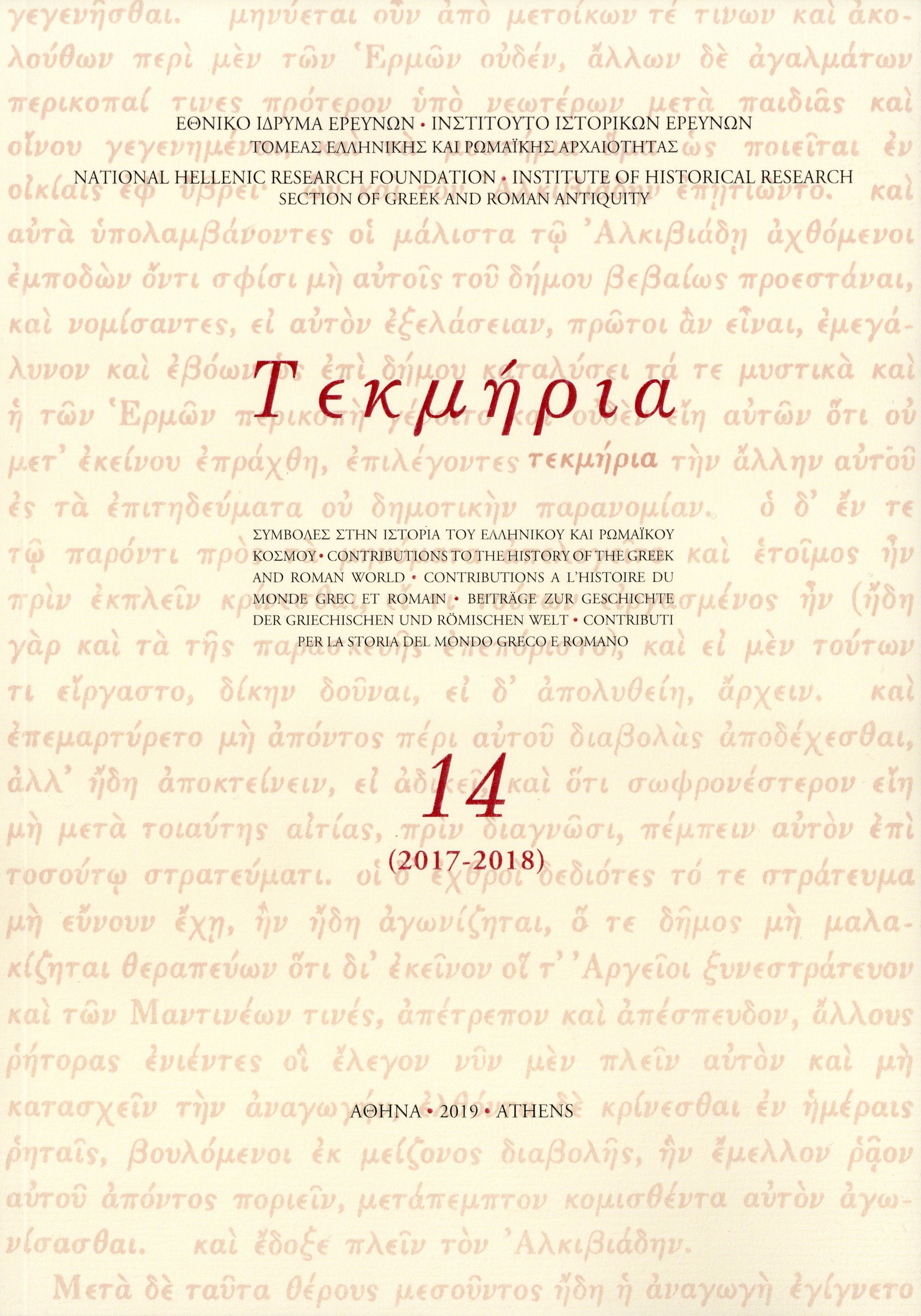Cyrus the Great as a “King of the City of Anshan”
Περίληψη
In the famous inscription of the Cylinder of Cyrus the Great composed after the fall of Babylon in 539 BC, the founder of the Persian empire is referred to as “king of the city of Anshan” and is made to indicate that this title was equally borne by his ancestors, Cambyses, Cyrus and Teispes.
Reference to the venerable –but nonetheless Elamite and to all appearances no longer politically important at the time– city of Anshan in Cyrus’ royal fami- ly titulary has triggered much scholarly discussion. It is currently thought that the references to Cyrus’ dynastic association with Anshan might acknowledge some sense of an Elamite affinity on the part of Cyrus’ royal line.
The present study argues that the title “king of the city of Anshan” of Cyrus and his forebears was meant to accommodate traditional perceptions of “legitimate kingship” within a native Mesopotamian/Elamite environment and cannot be used as evidence for an Elamite affiliation of Cyrus’ dynastic line.
Λεπτομέρειες άρθρου
- Πώς να δημιουργήσετε Αναφορές
-
Zournatzi, A. (2019). Cyrus the Great as a “King of the City of Anshan”. Τεκμήρια, 14, 149–180. https://doi.org/10.12681/tekmeria.20241
- Τεύχος
- Τόμ. 14: (2017-2018)
- Ενότητα
- Άρθρα

Αυτή η εργασία είναι αδειοδοτημένη υπό το CC Αναφορά Δημιουργού – Μη Εμπορική Χρήση – Παρόμοια Διανομή 4.0.
Οι συγγραφείς των άρθρων που δημοσιεύονται στα Τεκμήρια διατηρούν τα δικαιώματα πνευματικής ιδιοκτησίας επί των άρθρων τους, παραχωρώντας στο περιοδικό το δικαίωμα της πρώτης δημοσίευσης. Άρθρα που δημοσιεύονται στα Τεκμήρια μπορούν να χρησιμοποιούνται ελεύθερα για μη κερδοσκοπικούς σκοπούς, χωρίς δικαίωμα τροποποίησης (δημιουργία παράγωγου έργου), με αναφορά στο συγγραφέα και στην πρώτη δημοσίευση. Το Εθνικό Ίδρυμα Ερευνών διατηρεί το δικαίωμα να δημοσιεύει, να αναπαράγει, να παρουσιάζει στο κοινό, να διανέμει και να χρησιμοποιεί άρθρα που δημοσιεύονται στα Τεκμήρια σε οποιοδήποτε μέσο και μορφή, είτε μεμονωμένα είτε ως μέρη συλλογικών έργων, για όλο το χρόνο διάρκειας προστασίας της πνευματικής ιδιοκτησίας και για όλες τις χώρες του κόσμου. Αυτό περιλαμβάνει, ενδεικτικά και όχι αποκλειστικά, το δικαίωμα δημοσίευσης των άρθρων σε τεύχη του περιοδικού Τεκμήρια, αναπαραγωγής και διανομής μεμονωμένων αντιγράφων των άρθρων, αναπαραγωγής ολόκληρων των άρθρων σε άλλη έκδοση του ΕΙΕ, και αναπαραγωγής και διανομής των άρθρων ή της περίληψης τους με χρήση πληροφορικού συστήματος αποθετηρίου.



